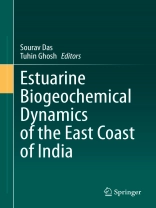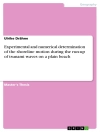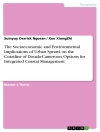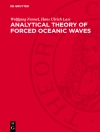This book provides a comprehensive overview of recent research on estuaries of the east coast of India, and how changing biogeochemical dynamics as a result of climate change and human activity have impacted estuaries and other open water ecosystems. Though estuaries only cover a very small portion of the earth’s hydrosphere, they are some of the most biogeochemically active regions among the global water bodies. As such, this book focuses on estuaries of the east coast of India going all the way to the Bay of Bengal, which is the world’s largest freshwater input from perennial rivers and rain-fed estuaries, and is therefore a unique area of study. Through its unique coverage of the Bay of Bengal in particular, the book presents a new perspective not present in the literature on estuary biogeochemistry and ecosystem dynamics. Moreover, the book addresses SDG 13 (Climate Action) and 14 (Life below Water), with a focus on ecosystem services of the natural aquatic system.The book will be useful to researchers, policy makers, coastal managers and marine sustainability scientists and organizations.
表中的内容
Chapter1. Introduction: An Overview of Biogeochemical Cycle of Estuarine System.- Chapter2. Geological set up of east coast of India.- Chapter3. Aquatic biogeochemistry of the estuarine and coastal waters of the Bay of Bengal: Impact of physical forcing and extreme atmospheric events.- Chapter4. Carbon dynamics of the estuaries along the east coast of India.- Chapter5. A systematic review of biogeochemistry of Mahanadi river estuary: Insights and future research direction.- Chapter6. Mercury resistant marine bacterial population in relation to abiotic variables at Bay of Bengal, India.- Chapter7. Persistent organic pollutants in the coastal and estuarine regions adjoining the Indian periphery of the Bay of Bengal. Chapter8. Characterizing the human health risk along with the bioaccumulation of heavy metals in the aquatic biota in the east coastal waters of the Indian peninsula.- Chapter9. Geo-statistical analysis of suspended particulate matter along the north-western coastal waters of Bay of Bengal.- Chapter10. Multiple facets of aquatic pollution in the estuarine and continental shelf waters along the east coast of India.- Chapter11. Nutrient cycling and seasonal dynamics of primary production in near shore waters of east coast of India.- Chapter12. Microzooplankton in estuaries, mangroves and lagoons of east coast of India.- Chapter13. Influence of physical processes on nutrient dynamics and phytoplankton in the coastal Bay of Bengal.- Chapter14. A review of estuarine CDOM dynamics of east coast of India Influenced by hydrographical forcing.- Chapter15. The Indian Sundarbans: biogeochemical dynamics and anthropogenic impacts
关于作者
Dr. Sourav Das is a Researcher in the School of Oceanographic Studies at Jadavpur University, India. His research interests include biogeochemistry of marine and coastal water, ocean remote sensing, optical properties of water (inherent & apparent optical properties), and air quality monitoring.
Prof. Tuhin Ghosh is Professor and Director of the School of Oceanographic Studies at Jadavpur University, India. He has more than two decades of research experience in coastal geomorphology, disaster management, climate change impacts, adaptation strategies, and human migration.












